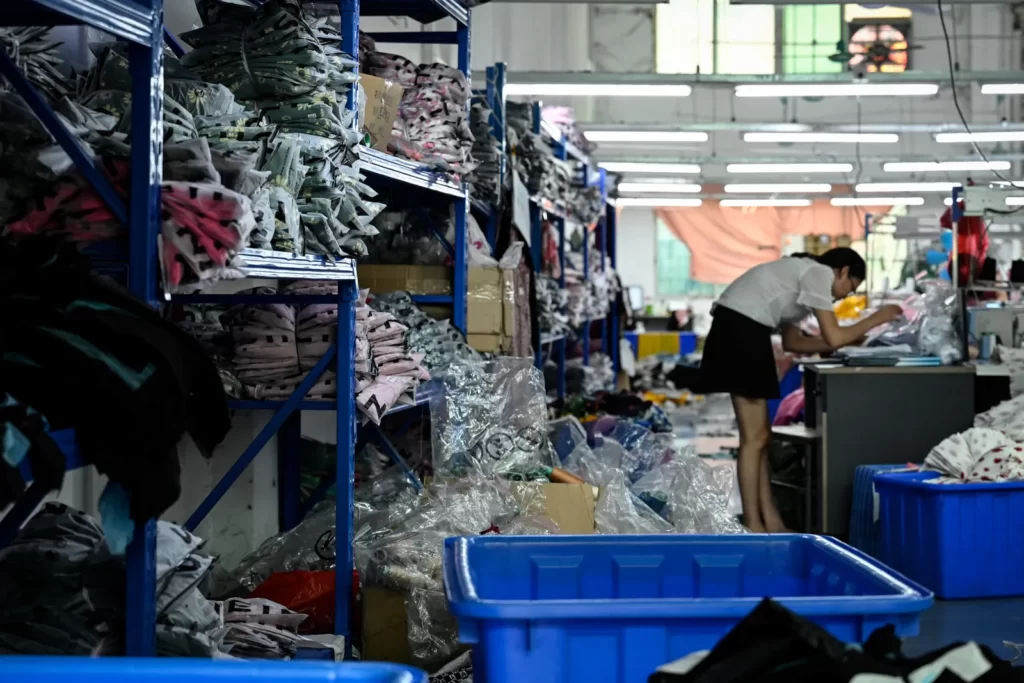By: Natalia Hasan
It’s easy to overlook what goes into making the clothes we wear every day. With just a few taps on a phone, we can have a brand-new outfit delivered to our doorstep—often for the price of a coffee. But behind the convenience and low cost of fast fashion lies a system that’s starting to show serious cracks, especially here in Europe.
In response to growing concerns, France has taken a pioneering step. A new bill aims to regulate ultra-fast fashion giants like SHEIN and Temu by introducing eco-score labels, banning advertising that encourages overconsumption, and imposing new environmental taxes of up to €10 per item by 2030 (ESG News, 2025). While the legislation is a bold move, it currently focuses only on digital-only platforms, leaving larger, established European brands outside its scope. Still, it marks an important shift in how governments are beginning to treat fashion not just as a cultural product, but as an environmental and ethical issue.

Why now? Because the numbers are difficult to ignore. The fashion industry is responsible for around 8% of global carbon emissions and consumes enough water each year to fill nearly 40 million Olympic-sized pools. In the EU alone, each person throws away about 16 kilograms of textiles annually, much of which ends up in incinerators or landfill. Even the items we think we’re recycling often travel thousands of kilometres only to be dumped in landfills in developing countries—adding to pollution and overwhelming local waste systems.
Only 1 % of used clothing is recycled into new garments, with over 80 % of textiles discarded via landfill or incineration . From the European perspective, more than 100 billion garments are produced yearly, yet the majority are never transformed again. In France alone, 35 clothing items are thrown away every second , creating an ever-growing mountain of waste (Euronews, 2025; RTL Today, 2025).
Global brand practices further deepen the impact. SHEIN’s carbon footprint nearly doubled in one year—from 9.17 million metric tonnes of CO₂e in 2022 to 16.7 million tonnes in 2023—with transport emissions accounting for 8.52 million tonnes, a 13.7 % year-on-year increase (Fashion Law Journal, 2025).
It’s not just the environment that bears the cost. The speed and scale at which fast fashion operates often come at the expense of transparency and fair labour. Many of the clothes are made in factories where wages are low, hours are long, and working conditions are far from ideal. Reports of child labour and unsafe environments, while difficult to track, remain a real concern. The pressure to produce quickly and cheaply doesn’t leave much room for ethical practice.
But it’s not all doom and gloom. Across Europe and beyond, small businesses are stepping up with creative solutions. In Sweden, the company Renewcell has developed a way to turn worn-out cotton and denim into new fabric—an industrial-scale breakthrough in textile recycling. Elsewhere, independent fashion labels are breathing new life into old clothes through upcycling, transforming discarded garments into fresh, one-of-a-kind pieces.
These efforts show us what’s possible when innovation meets intention. But they also highlight the need for broader change. As consumers, we have more power than we might think—to ask questions, to buy less but better, and to support brands that value sustainability over speed. If we don’t begin to shift our habits, we risk facing the consequences of our overconsumption together. Because while only a small portion of our clothing is truly recycled, the rest lingers—affecting ecosystems, economies, and future generations.
But as inspiring as these innovations are, they alone are not enough. If we don’t begin to rethink our buying habits and demand better—slower fashion, longer-lasting pieces, and more critical consumption. We all have a part to play—and with each more thoughtful choice, we can help restore balance between style and sustainability.
Feature photo source: Climate Action Africa
Also read: Nicosia school items drive – open call
For more videos and updates, check out our YouTube channel.


